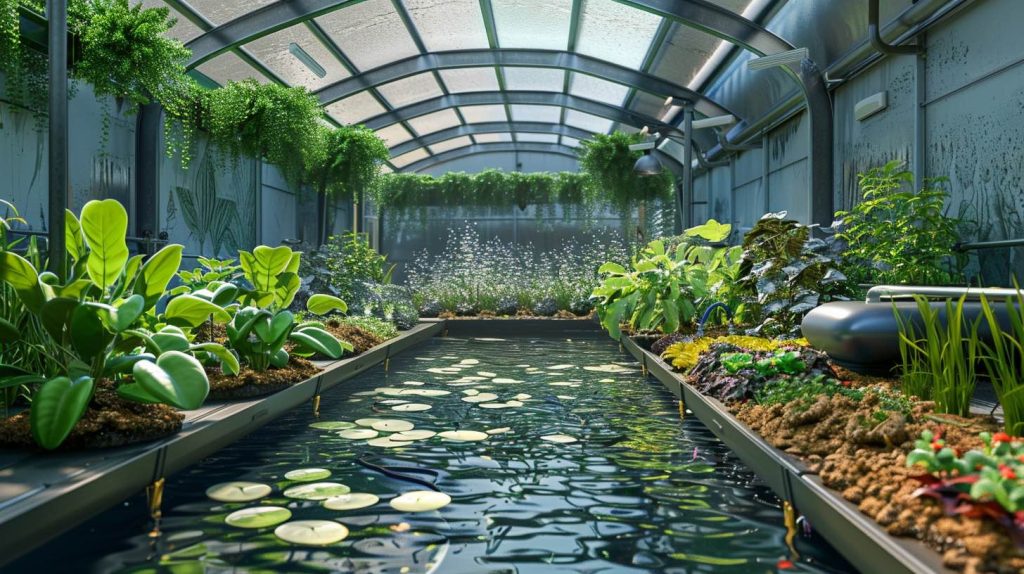
Aquaponics, a sustainable method of combining fish farming with soilless plant cultivation, has gained significant traction in Australia due to its efficiency and eco-friendliness. This guide will walk you through the basics of setting up your aquaponics garden, offering tips to thrive in Australia’s unique climate.
Aquaponics is an innovative farming technique that creates a symbiotic ecosystem where fish and plants grow together. Fish waste provides an organic nutrient source for the plants, and the plants, in turn, filter and clean the water that returns to the fish environment.
Australia’s varied climate, from the wet tropics to arid deserts, presents unique challenges to traditional farming. Aquaponics offers a solution by using water efficiently, making it ideal for water-scarce areas and urban settings where space and water are at a premium.
The cornerstone of a successful aquaponics system is its location. Optimal placement is crucial, as your setup needs to bask in generous sunlight—the lifeline for your plants. Yet, it’s equally important to shield your aquaponic garden from Australia’s sometimes harsh and unpredictable weather. Look for a spot that strikes a balance between receiving at least 6 to 8 hours of sunlight daily and being safeguarded against strong winds, heavy rain, or the scorching midday sun. Consider utilizing natural barriers or constructing protective structures to create a conducive microclimate for your aquaponics system.
Aquaponics offers a range of system designs, each with its unique advantages. The choice among media-filled beds, nutrient film technique (NFT), and deep-water culture (DWC) systems hinges on your available space, budget, and the specific plants and fish you aim to cultivate. Media-filled beds, filled with clay pebbles or gravel, are perfect for beginners due to their simplicity and versatility. NFT systems, where nutrient-rich water flows through channels containing plant roots, suit leafy greens and herbs. Meanwhile, DWC setups, involving plants floating on water while roots dip below, are ideal for larger-scale operations. Assessing your goals and constraints will guide you to the most suitable system design for your aquaponic garden.
Your aquaponics system’s aquatic component can include a variety of fish species, well-suited to the Australian climate. Popular choices are Barramundi, Jade Perch, Silver Perch, and Murray Cod, each bringing different benefits and requirements to the table. Barramundi is sought after for its rapid growth and high market value, making it a favorite for commercial setups. Jade and Silver Perch are hardy species, adaptable to various water conditions and known for their health benefits. Murray Cod, a native Australian fish, is prized for its flavor but requires cooler water. It’s vital to adhere to local regulations regarding fish cultivation and to consider factors like water temperature preferences and the availability of suitable fish food.
While leafy greens such as lettuce, spinach, and a variety of herbs are stalwarts of aquaponic systems due to their quick growth cycles and low nutrient needs, don’t shy away from experimenting with more demanding crops like tomatoes, cucumbers, and peppers. These plants require more attention to light and nutrient levels but can flourish in a well-tuned aquaponics setup. Selecting plants based on your system’s capacity, light availability, and nutritional output from your fish will lead to a bountiful harvest. Additionally, incorporating flowering plants can increase pollinator activity, enhancing the ecosystem’s productivity and resilience.
Maintaining pristine water quality is non-negotiable for the health of both fish and plants. Regular testing for pH levels, ammonia, nitrites, and nitrates will help you avoid common pitfalls that could jeopardize your garden. Aim for a pH range of 6.8 to 7.2 for optimal plant absorption and fish health. Ammonia and nitrite levels should be kept as low as possible, with nitrates—plant food—managed through plant uptake and occasional water changes. Understanding the nitrogen cycle and how it affects your aquaponic system is essential for long-term success.
Australia’s diverse climate demands thoughtful adaptation of your aquaponics system. In warmer regions, cooling strategies like shade cloths or strategic planting can protect your system from overheating, while ensuring adequate oxygen levels with aeration techniques is critical. Conversely, cooler Australian climates might necessitate the use of greenhouses or water heaters to maintain a stable environment conducive to growth year-round. Tailoring your system to local weather patterns and seasonal changes will ensure your aquaponic garden’s productivity and resilience.